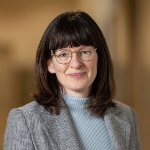Since 2019, the Research Training Group (RTG) "Intraoperative Multisensoric Tissue Differentiation in Oncology," a collaboration between the University of Stuttgart and the University of Tübingen, has been advancing research in medical technology. With the help of new sensor methods, the researchers want to help make surgical procedures on cancer patients safer and more effective.
Following a successful evaluation by the German Research Foundation (DFG), the research training group will enter its second funding period in 2024: A total of 34 early career researchers will be funded with around 4.5 million euros over the next four and a half years. The RTG is dedicated to developing innovative sensor technologies for tissue differentiation that clinicians can use in the operating room. By employing advanced methods of sensor fusion and machine learning, these technologies aim to enhance the accuracy and reliability of tissue assessment during surgery. "We are delighted to be able to continue the successful interdisciplinary collaboration between experts from systems engineering, computer science and physics with the clinical fields of urology, gynecology and pathology," says Oliver Sawodny, Professor at the Institute for System Dynamics at the University of Stuttgart and spokesperson for the RTG.
Precise tumor removal thanks to improved intraoperative diagnostics
In many cases, tumors are now removed using minimally invasive techniques. "Keyhole surgery is a blessing for patients, as it allows us to avoid large incisions by using a camera to magnify everything inside the abdomen," says Professor Sara Brucker, Medical Director at the University Women's Hospital in Tübingen, who also serves as the deputy spokesperson for the RTG.
The aim of the procedures is a complete tumor resection, i.e. the complete removal of the malignant tissue. At the same time, the surgeons try to spare the structures surrounding the tumor as much as possible and preserve as much healthy tissue as possible. In order to differentiate between healthy and malignant tissue and to precisely determine the tumor margins, they rely on good intraoperative diagnostics. Currently, histopathological frozen section examination is considered the gold standard. Because the tissue is evaluated by pathologists outside the operating theater, the operation takes longer. In addition, the frozen section does not allow a comprehensive assessment of the heterogeneity and complexity of the tumor.
The aim of the research training group is to develop supplementary diagnostic methods that enable tissue differentiation with high information quality in real time directly in the operating theater: In multisensoric tissue differentiation, minimally invasive sensors examine optical, mechanical and electrical tissue parameters during the operation. The information obtained is combined with image data and compared with preoperative histopathological examination results. "The aim is to be able to differentiate the tissue in the abdominal cavity," says Sara Brucker. "This method could shorten the duration of the operation and improve the postoperative outcome in terms of functional preservation and recurrence rate," says Oliver Sawodny.
Interdisciplinary research in three key areas
The Research Training Group conducts research in three main areas: "Sensor Development", "Modeling and Classification" and "Surgery and Pathology". Scientists and doctors collaborate closely on these projects, working hand in hand to achieve their goals. The establishment of a "Joint Lab" with a link to the frozen section diagnostics department at Tübingen University Hospital has resulted in a particularly close exchange between the disciplines.
During the first funding period, the team achieved significant milestones, including a proof of concept that demonstrated the fundamental sensitivity of the proposed new sensor principles. The clinical focus was on applications in gynecology and urology. Over the next four and a half years, the group will focus on intraoperative tissue characterization in high resolution and coupling with 3D localization of organs and sensor instruments.
Research Training Groups
The aim of Research Training Groups is to support young researchers. They provide doctoral candidates with the opportunity to pursue their doctorates through a structured research and qualification program, ensuring a high level of professional training. In May 2024, the German Research Foundation DFG approved 17 new RTGs and extended nine for a further funding period - including the Research Training Group "Intraoperative Multisensoric Tissue Differentiation in Oncology", in which the University of Stuttgart and the University of Tübingen are involved. The second, four-and-a-half-year funding period for this RTG will fund eight projects by 16 doctoral students in the engineering and natural sciences. In addition, 18 medical scholarships with a duration of twelve months are also planned. The funding totals around 4.5 million euros.
Website of the RTG "Intraoperative Multisensoric Tissue Differentiation in Oncology"
Expert Contact:
Prof. Oliver Sawodny, Institute for System Dynamics, Tel. +49 711 685-66302, email

Lena Jauernig
Editor Research / Early Career Researchers




